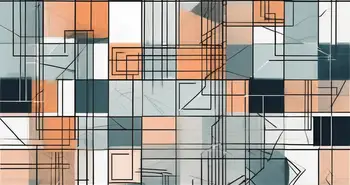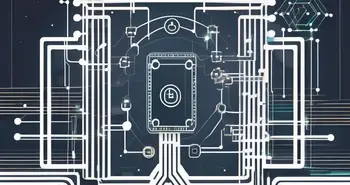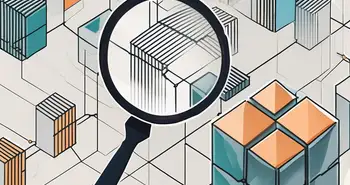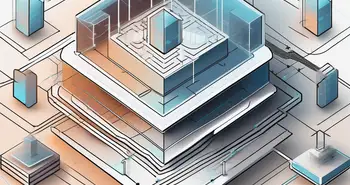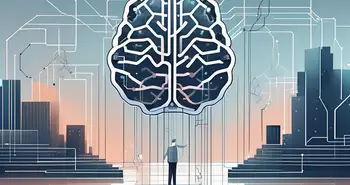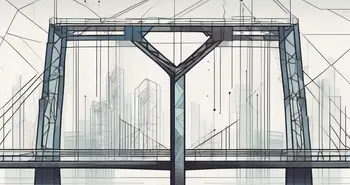Exploring Layer 3 Blockchain Technology
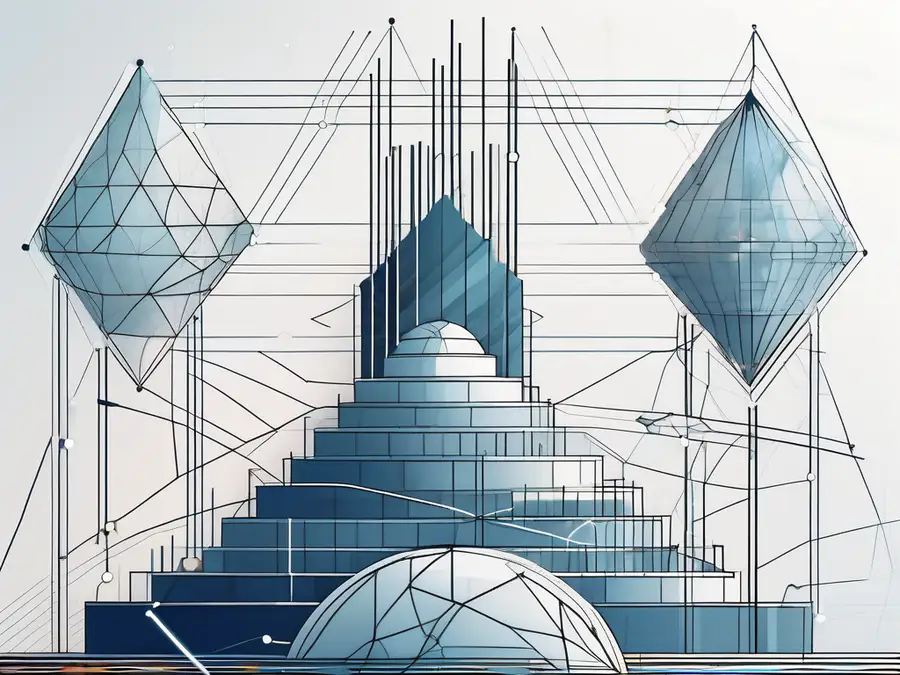
As an expert in the field of blockchain technology, I am excited to share with you the ultimate guide to Layer 3 blockchain technology. With the increasing popularity of blockchain and its potential to revolutionize various industries, it is essential to understand the intricacies of this groundbreaking technology. In this comprehensive guide, we will explore the basics of blockchain, delve into the layers of blockchain architecture, examine the functionality and importance of Layer 3, discuss future developments, and address challenges and solutions in Layer 3 blockchain technology.
Understanding Blockchain Technology
Before we dive into the specifics of Layer 3 blockchain technology, let's establish a solid foundation by understanding the basics of blockchain. At its core, blockchain is a decentralized digital ledger that records transactions across multiple computers in a transparent and immutable manner. By leveraging cryptography and consensus algorithms, blockchain ensures the integrity and security of data stored within its decentralized network.
Over time, blockchain technology has evolved, giving rise to various layers of architecture that enhance its capabilities. Let's explore the evolution of blockchain technology to gain a deeper understanding of its progression.
The Basics of Blockchain
Blockchain originated with Bitcoin, the first and most well-known cryptocurrency. Bitcoin introduced the concept of a distributed ledger, where transactions are verified and recorded by a network of participants, known as nodes. This foundation laid the groundwork for subsequent advancements in blockchain technology.
The Evolution of Blockchain Technology
As blockchain gained traction, developers began exploring ways to expand its functionality beyond cryptocurrency. This led to the development of blockchain platforms like Ethereum, which introduced smart contracts. Smart contracts are self-executing agreements with predefined rules, eliminating the need for intermediaries in various industries, such as finance, supply chain management, and healthcare.
Furthermore, the evolution of blockchain technology gave rise to Layer 2 solutions, such as the Lightning Network. Layer 2 solutions aim to address the scalability issues faced by blockchain networks, enabling faster and more cost-effective transactions. These solutions build on top of the base layer of blockchain, providing additional functionalities and improving the overall user experience.
Moreover, the advent of Layer 3 blockchain technology brought forth exciting advancements in the field. Layer 3 focuses on interoperability, allowing different blockchain networks to communicate and share information seamlessly. This opens up a world of possibilities, enabling cross-chain transactions, data sharing, and collaboration between disparate blockchain ecosystems.
Additionally, Layer 3 blockchain technology introduces advanced consensus mechanisms, such as proof-of-stake (PoS) and delegated proof-of-stake (DPoS). These consensus algorithms offer energy-efficient alternatives to the traditional proof-of-work (PoW) mechanism used in Bitcoin. By reducing energy consumption and increasing transaction throughput, Layer 3 blockchain networks pave the way for widespread adoption and scalability.
The Architecture of Blockchain: Layers Explained
Blockchain architecture consists of three primary layers: Layer 1, Layer 2, and Layer 3. Each layer plays a crucial role in the overall functionality and efficiency of blockchain technology. Let's take a closer look at these layers.
An Overview of Layer 1
Layer 1, also known as the protocol layer, forms the foundation of blockchain technology. It includes the underlying blockchain infrastructure, consensus algorithms, and core functionalities like transaction verification and block validation. Examples of Layer 1 blockchain platforms include Bitcoin and Ethereum.
The Role of Layer 2
Layer 2 focuses on scalability and improving the performance of Layer 1 blockchains. It introduces solutions like off-chain transactions and payment channels, allowing users to conduct faster and more cost-effective transactions. Layer 2 solutions, such as the Lightning Network, enable increased transaction throughput and reduced fees.
Diving Deep into Layer 3 Blockchain Technology
Layer 3, often referred to as the application layer, is where we truly unlock blockchain's full potential. This layer encompasses various protocols and applications built on top of the underlying blockchain infrastructure. Let's explore the functionality and importance of Layer 3 in further detail.
The Functionality of Layer 3
Layer 3 introduces a wide range of applications and services that leverage blockchain technology. These can include decentralized finance (DeFi) platforms, non-fungible tokens (NFTs), supply chain management solutions, and much more. Layer 3 protocols enable developers and entrepreneurs to build innovative decentralized applications (dApps) that provide unique value propositions.
The Importance of Layer 3 in Blockchain
Layer 3 is crucial for driving mass adoption of blockchain technology. It bridges the gap between complex blockchain infrastructure and end-users, making it accessible and user-friendly. Layer 3 protocols and applications enhance user experience, provide advanced functionalities, and contribute to the growth of the overall blockchain ecosystem.
As an expert in Layer 3 blockchain technology, I have witnessed the transformative power it holds. One particular instance stands out in my mind when I witnessed a decentralized energy trading platform built on Layer 3. This platform allowed individuals to trade excess solar energy directly with their neighbors, thus creating a more sustainable and efficient energy system. It was truly remarkable to see how Layer 3 technology enables real-world solutions and empowers individuals to take control of their resources.
The Future of Layer 3 Blockchain Technology
Looking ahead, Layer 3 blockchain technology holds immense potential for further advancements and innovation. Let's explore some predicted developments in Layer 3 technology and the impact it will have on future blockchain applications.
Predicted Developments in Layer 3 Technology
The continuous evolution of Layer 3 will lead to improved scalability, interoperability, and privacy features. We can expect the emergence of more sophisticated smart contract platforms, decentralized identity solutions, and enhanced cross-chain communication protocols. These developments will facilitate seamless integration of blockchain technology across various industries.
The Impact of Layer 3 on Future Blockchain Applications
Layer 3 advancements will drive the creation of groundbreaking blockchain applications that cater to specific industry needs. From decentralized finance to decentralized governance and prediction markets, Layer 3 will enable more efficient and transparent systems. It will disrupt traditional industries, revolutionize business operations, and empower individuals by providing them with greater control over their data and assets.
Challenges and Solutions in Layer 3 Blockchain Technology
While Layer 3 brings numerous benefits, it also presents certain challenges. Let's explore some common issues in Layer 3 implementation and innovative solutions to overcome them.
Common Issues in Layer 3 Implementation
One common challenge in Layer 3 implementation is scalability. As more users join the network and demand increases, scalability becomes crucial to maintain optimal performance. Another challenge is ensuring interoperability between different Layer 3 protocols and applications to enable seamless communication and data exchange.
Innovative Solutions for Layer 3 Challenges
To address scalability, developers are exploring off-chain scaling solutions and sidechains that can handle a higher volume of transactions. This approach reduces the load on the underlying Layer 1 blockchain while maintaining security and decentralization. Interoperability is being tackled through the development of cross-chain communication protocols like Polkadot and Cosmos, allowing different Layer 3 applications to interact and share data.
FAQ
What is blockchain technology?
Blockchain technology is a decentralized digital ledger that records transactions across multiple computers in a transparent and immutable manner.
What are the layers of blockchain architecture?
Blockchain architecture consists of Layer 1, Layer 2, and Layer 3. Layer 1 forms the foundation, Layer 2 focuses on scalability, and Layer 3 includes various protocols and applications built on top of the underlying blockchain infrastructure.
What is the importance of Layer 3 in blockchain?
Layer 3 is crucial for driving mass adoption of blockchain technology. It bridges the gap between complex blockchain infrastructure and end-users, making it accessible and user-friendly.
What are some predicted developments in Layer 3 technology?
We can expect improved scalability, interoperability, and privacy features in Layer 3 technology. This will lead to the emergence of more sophisticated smart contract platforms, decentralized identity solutions, and enhanced cross-chain communication protocols.
What are the challenges in Layer 3 implementation?
Scalability and interoperability are common challenges in Layer 3 implementation. Ensuring the network can handle increased demand and enabling efficient communication between different Layer 3 protocols are key considerations.
In conclusion, Layer 3 blockchain technology holds immense potential for driving innovation and transforming various industries. Its functionality, importance, and impact are vital to the overall growth of blockchain technology. As an expert in this field, I encourage you to explore the limitless possibilities of Layer 3 and embrace the opportunities it presents.
As you embrace the future of Layer 3 blockchain technology and its transformative potential, discover how Morpher.com is leading the charge in revolutionizing the trading landscape. With its zero-fee structure, infinite liquidity, fractional investing, and the unique ability to short sell across diverse markets, Morpher offers a trading experience tailored for the modern investor. Empower your trades with up to 10x leverage and take control of your investments with the secure, self-hosted Morpher Wallet. Join a platform that's as innovative as the technology it's built on. Sign Up and Get Your Free Sign Up Bonus today and be part of the trading evolution with Morpher.

Disclaimer: All investments involve risk, and the past performance of a security, industry, sector, market, financial product, trading strategy, or individual’s trading does not guarantee future results or returns. Investors are fully responsible for any investment decisions they make. Such decisions should be based solely on an evaluation of their financial circumstances, investment objectives, risk tolerance, and liquidity needs. This post does not constitute investment advice.

Painless trading for everyone
Hundreds of markets all in one place - Apple, Bitcoin, Gold, Watches, NFTs, Sneakers and so much more.

Painless trading for everyone
Hundreds of markets all in one place - Apple, Bitcoin, Gold, Watches, NFTs, Sneakers and so much more.


